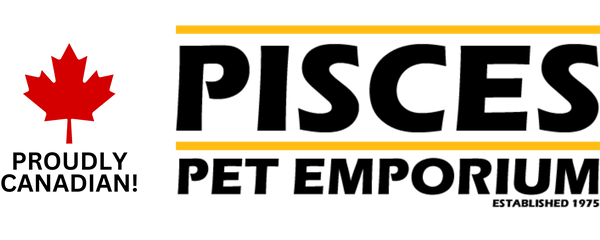There are a lot of fish food options on the market, so knowing what, when, why, and how much to feed can get confusing. We’re hoping to answer some of these questions for you today as utilizing these factors together helps with fish health and coloration and can reduce the amount of maintenance needed on the tank. These are general guidelines as some fish have specific diet requirements; it’s always important to research the species you are keeping or planning to keep to ensure compatibility.
-
What to feed
The fish you keep have an impact on what to feed, both with formula and form of food offered. If you keep specific species, then you want a food geared towards them. For example, goldfish will need goldfish-specific diets, cichlids will want cichlid-specific diets, bottom feeders and algae eaters will need diet-specific sinking foods, and so on. If you keep a community aquarium, then a well-rounded community food is perfect. If you have lots of fish with different-sized mouths, flakes tend to be a good option. If they all have similar-sized mouths, then offering an appropriately sized pellet can work very well. You also want variety. Much like people, fish benefit heavily from variety, and frozen foods offered a few times a week can improve your fish’s health. For most fish kept in a community, bloodworms or mysis shrimp are great options for frozen food!
-
When to feed
When to feed your fish typically falls on your preference. Ideally, having a feeding routine is best; fish will get used to when food hits the tank and less will go to waste. Most fish are best fed when tank lights are on, regardless of if its mid-day, right when lights come on, or right before lights go out—just be consistent when you feed them.
-
Why to feed
Different foods have different benefits. Your general formulas are good for offering fish what they need for their day-to-day lives. Breeding formulas offer the fish more energy and calcium, and increase fat stores for the breeding and rearing process. Colour-enhancing formulas are fortified with carotenoids that help bring out the colours as they build up in the fish’s system. High-protein diets are great for predatory fish that eat a lot, allowing them to stay lean. Depending on what you want out of your fish, you can offer specific foods. In most cases, a varied diet with a staple formula will do best if you just want healthy and active fish.
-
How much to feed
By far the biggest confusion when it comes to fish food is how much to feed. Generally, your fish will always seem to be in search for food when you’re around the tank; they are opportunistic feeders and will eat whether they need to or not, and they will associate your presence with food. The best rule of thumb is feeding your fish no more than they will eat within two minutes once a day. The best way to do this is to feed a small amount, let them eat it, and then feed a little more, continuing to do so until the two minutes is up. Not only does this reduce the amount of uneaten food in the aquarium, allowing for less waste build-up, but feeding in this way can allow all the fish in your aquarium to get food.
At the end of the day, every aquarium is different depending on the species of fish you keep. Fish are opportunistic and will eat most foods you offer whether it’s the best for them or not. Ensure you have the correct formulas for the fish you keep, proper variety for a well-rounded diet, and a good feeding schedule with the right amount of food offered. You know your aquarium better than anyone else, so you may need to dial things in to best suit your tank off these guidelines. Doing so will set you up for long-term success for both your fishes’ health and stability in your aquarium’s water parameters.




